What Math Symbols There Are, and When to Use Them
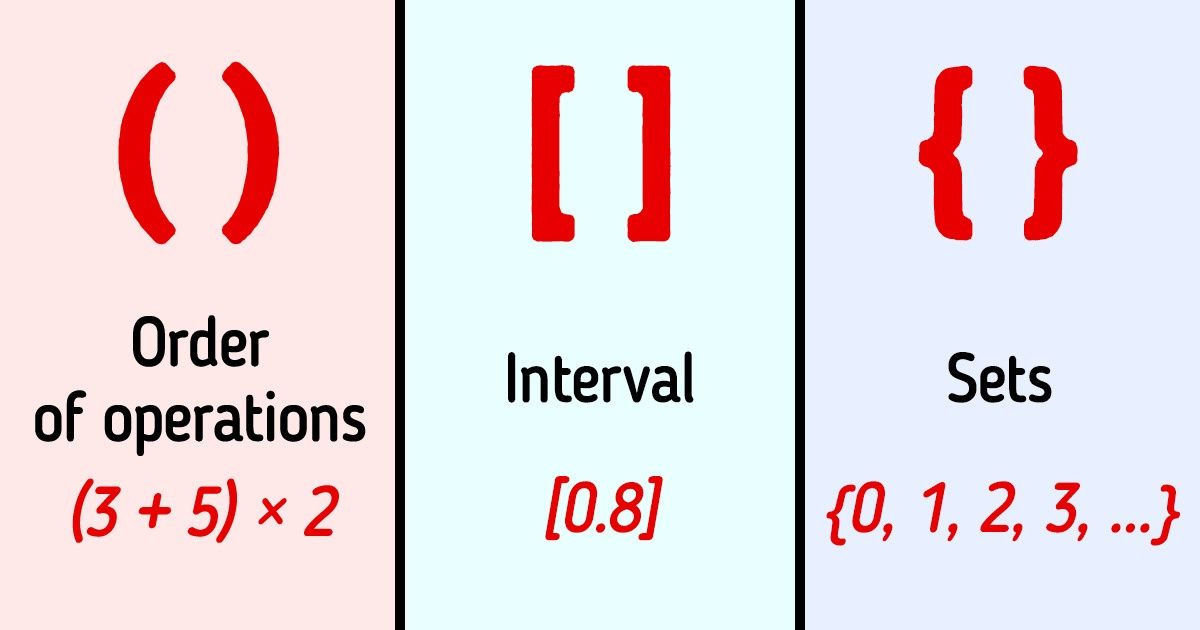
Symbols help shorten and simplify the text in math expressions. They are used to express certain calculations and structuring of other symbols in a formula.
5-Minute Crafts is going to tell you about math symbols and how to use them correctly.
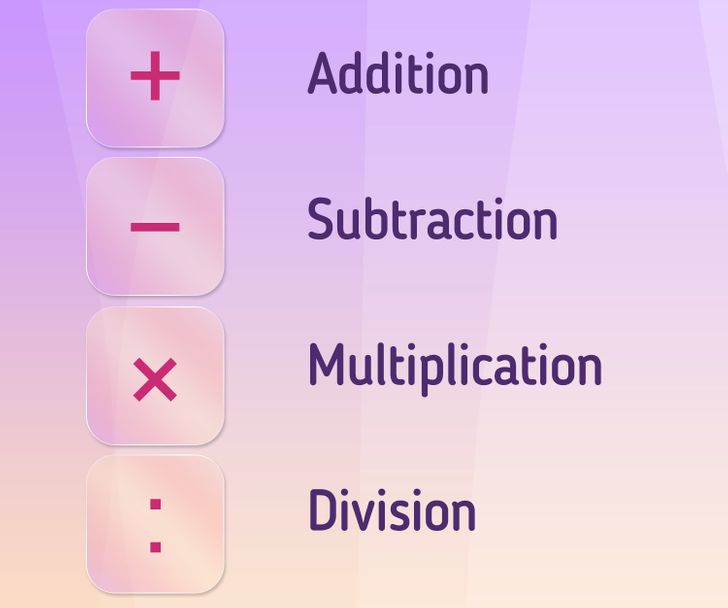
🟡 Plus ( + ) is used for addition (like 2+2).
🟡 Minus ( − ) is used for subtraction (like 4 − 2) or to denote negative numbers (like −2).
🟡 Multiply ( × ) is used for multiplication (like 2 × 2). Symbols " · " or " * " can also be used.
🟡 Divide ( : ) is used for division (like 4:2) or to denote relation of 2 numbers (1:1). " / " can also be used to denote division.
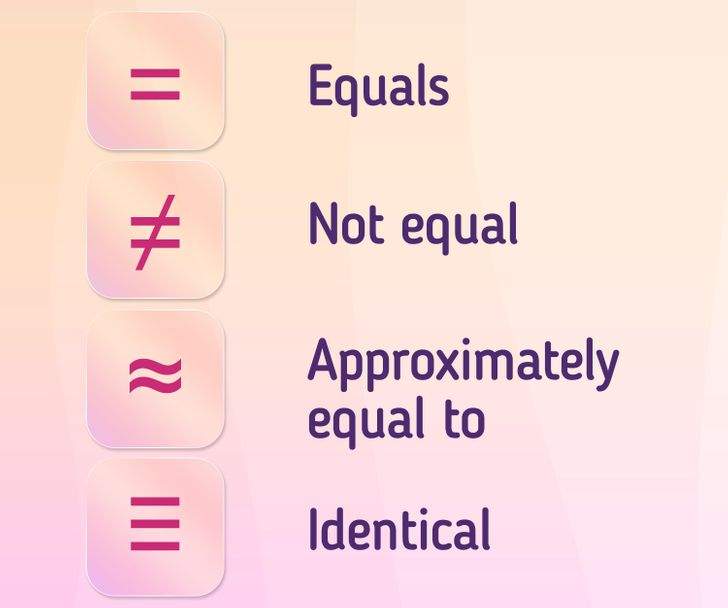
🟠 Equality ( = ) is used to denote that something is equal (5 × 6) = (3 × 10) or to show a result of a math action (like 5 + 6 = 11).
🟠 Non-equality ( ≠ ) is used to show non-equal parts of a single expression (2 ≠ 3).
🟠 Approximate equality ( ≈ ) means something “is approximately equal to” something else (π ≈ 3.14).
🟠 Identity ( ≡ ) denotes an identity, that is, an equality that is true according to the values given to the variables occurring in it (а + (−а) ≡ 0).
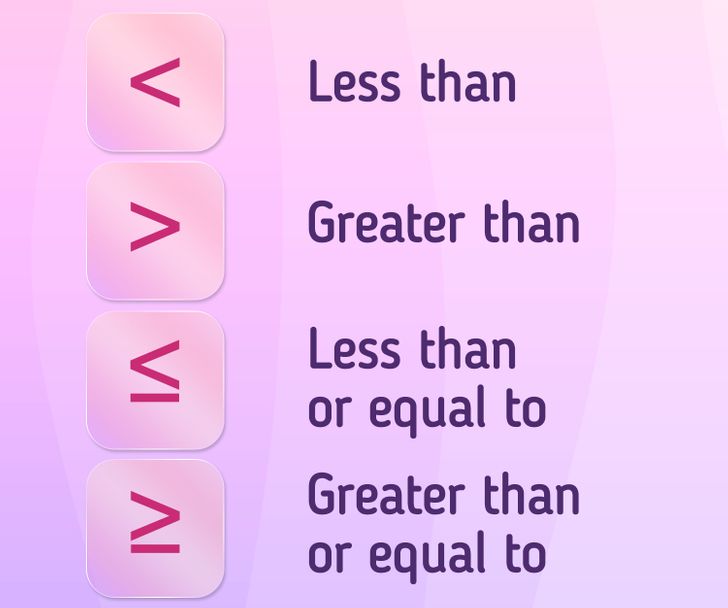
🟣 Less than ( < ) is the strict inequality between 2 numbers (2 < 3).
🟣 Greater than ( > ) is the strict inequality between 2 numbers (3 > 2).
🟣 Less than or equal to ( ≤ ) denotes an expression where 1 part is less than or equal to the other (like а ≤ b where a is either less than or equals b).
🟣 Greater than or equal to ( ≥ ) denotes an expression where 1 part is greater than or equal to the other (like а ≥ b where a is either greater than or equal to b).
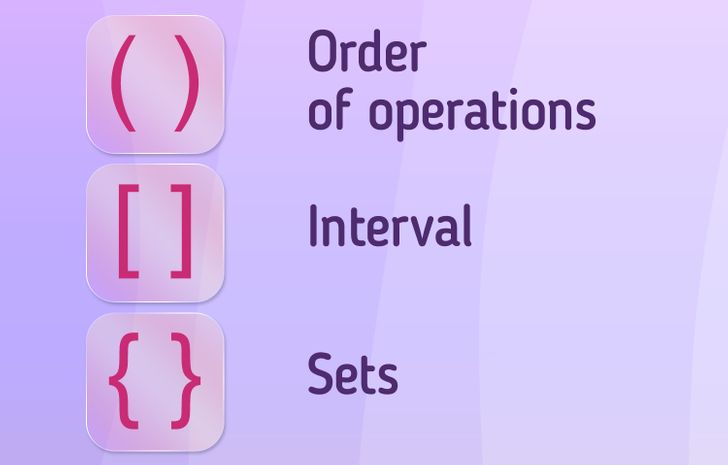
🟢 Parentheses ( ) are used to show the order of math operations. For example, (3 + 5) × 2 means that you first add 3 to 5, then multiply the sum by 2.
🟢 Square brackets [ ] are used to denote the order to second-order operations. For example, [(3 + 5) × 2]² means that you first add 3 to 4, then multiply the sum by 2, and then to the power of 2. Also, such brackets may show intervals. For example, [0.8] is a set of numbers from 0 to 8.
🟢 Braces { } are used for sets. For example, a set of positive integers can be seen as {0, 1, 2, 3, ...}.
Other symbols
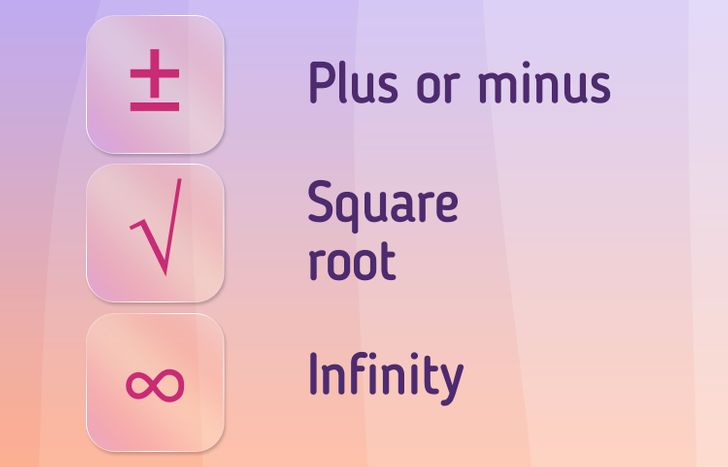
🔵 Plus or minus ( ± ) is used for a range. For example, 15 ± 3 means that the result is from 12 to 18.
🔵 Square root ( √ ) is a square root of a certain number. For example, √4 is read as “the square root of 4.” The result is 2.
🔵 Infinity ( ∞ ) means that the computation is unlimited.